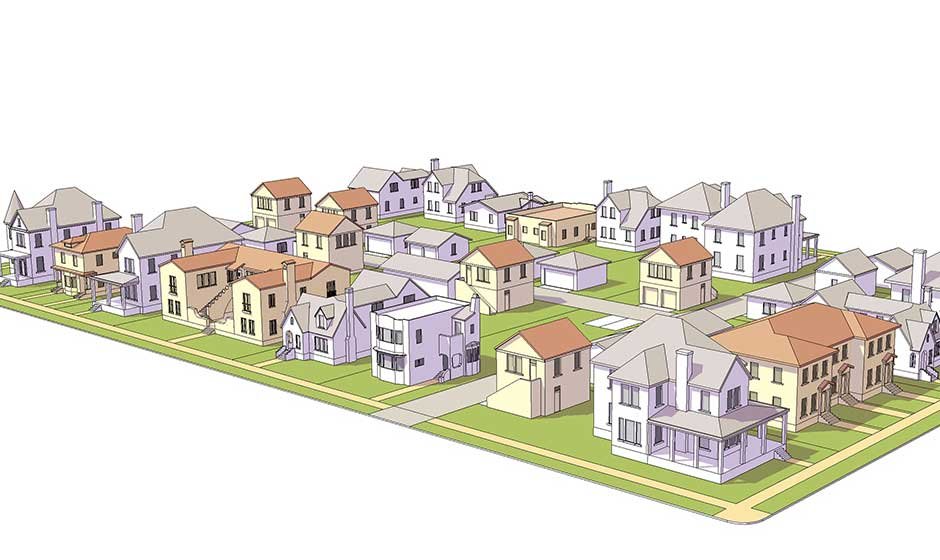Understanding Missing Middle Housing
As urban populations swell and cities evolve to accommodate growing demand, the challenge of providing flexible, affordable, and community-friendly housing becomes ever more critical. Within this landscape, the concept of “missing middle” housing has emerged as a pivotal solution, offering a range of housing types—such as duplexes, triplexes, fourplexes, townhomes, and cozy apartment buildings—that sit between traditional single-family residences and large apartment complexes. These structures, exemplified by options like a 4 plex for sale, present a versatile answer for those seeking investment opportunities or an inviting place to call home in our increasingly dense urban environments.
Distinctively, missing middle housing tends to be low- to mid-rise and is thoughtfully designed to fit seamlessly into existing neighborhoods, enhancing walkability and community appeal without dominating the skyline or disrupting the established aesthetic. They represent a broad spectrum of choices designed for a diverse array of residents, from young professionals embarking on their first independent living experiences, to growing families in need of additional space, to older adults interested in downsizing while remaining rooted in a familiar community setting. In fostering a mix of housing styles and price points, cities can promote vibrant, equitable neighborhoods that genuinely reflect the varied needs of their residents.
Benefits of Integrating Missing Middle Housing
When urban planners and policymakers weave missing middle housing into cities and towns, the impact reaches beyond simply increasing the number of places to live. The advantages are multi-faceted and touch almost every dimension of community life:
- Affordability:The modest size of missing middle units and their shared walls considerably reduce construction and ongoing maintenance costs, making homeownership or renting achievable for people at many income levels. This affordability buffer not only strengthens economic stability for residents but also curbs housing insecurity and displacement as cities grow.
- Density without High-Rises:Unlike high-rise towers that can feel detached from neighborhood life and dramatically change a community’s look and feel, missing middle housing improves neighborhood density gently. This “gentle density” brings more customers to local small businesses, supports vibrant street life, and improves public transit viability—without sacrificing the human scale and character that draw people to these neighborhoods in the first place.
- Community Cohesion:By allowing residents of differing ages, family sizes, and life stages to live within one neighborhood, missing middle options promote a stronger sense of belonging and connection. Families and individuals previously priced out by soaring single-family home costs gain access to the schools, parks, and amenities of older, established neighborhoods, leading to more diverse and invested communities that grow stronger with every generation.
These benefits are scalable and adaptable, capable of complementing the distinctive history or culture of any neighborhood. When implemented thoughtfully, missing middle housing becomes a crucial instrument for achieving balanced, sustainable growth that genuinely enhances, rather than threatens, community life.
Strategies for Successful Implementation
Transforming urban and suburban neighborhoods with missing middle housing involves a comprehensive approach that brings together thoughtful policy and active public participation:
- Zoning Reform:Cities must update regulations to support various housing forms that respond to evolving community needs, moving beyond one-size-fits-all policies that favor single-family homes. Gradual revisions, pilot projects, and overlay districts can foster innovation while easing existing residents into change.
- Community Engagement:Early, genuine involvement of neighborhood stakeholders in the planning process can identify concerns, surface creative solutions, and boost support for inclusive zoning reform. Techniques such as town halls, design workshops, and transparent public feedback channels are invaluable for nurturing local buy-in.
- Incentives for Developers:Cities can stimulate responsible development by streamlining permitting, reducing fees, or offering density bonuses for affordable or workforce housing projects. These incentives ensure new construction is sensitive to local context and meets design standards that promote livability and neighborhood integration.
- Infrastructure Planning:It is essential to coordinate improvements to public facilities, roads, transit systems, and green spaces alongside the new housing supply. Proactive upgrading ensures that new residents enjoy the same quality of life as established community members and that neighborhoods evolve harmoniously as they grow.
With vision, collaborative spirit, and smart planning, missing middle housing can be the cornerstone of inclusive, adaptive, and enduring communities. Embracing these housing choices allows cities to preserve what makes their neighborhoods unique while providing homes and opportunities for everyone, creating a foundation for lasting prosperity and resilience.










